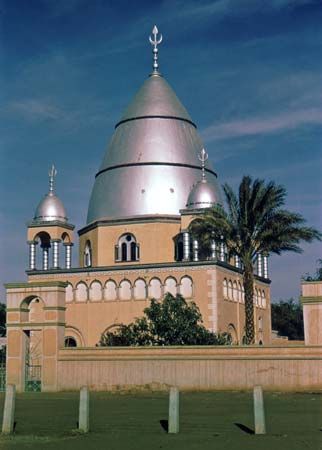Omdurman
Our editors will review what you’ve submitted and determine whether to revise the article.
- Arabic:
- Umm Durmān
News •
Omdurman, one of the Three Towns (with Khartoum and Khartoum North), east-central Sudan. Situated on the bank of the main Nile River just below the confluence of the Blue and White Niles, Omdurman was an insignificant riverine village until the victory of Muḥammad Aḥmad, known as al-Mahdī, over the British in 1885. Al-Mahdī and his successor, the caliph ʿAbd Allāh, made it their capital, and it grew rapidly as an unplanned town of mud houses. Omdurman was captured by Anglo-Egyptian forces led by Major General Sir Herbert (later Lord) Kitchener in 1898 but continued to develop into the cultural, religious, and commercial centre of Sudan.
Although Khartoum is the executive capital of Sudan, part of the country’s legislature meets in Omdurman. ʿAbd Allāh’s house is now a museum, and the tomb of al-Mahdī has been restored. The Islamic University of Omdurman (founded 1912; university status 1965), connected with the principal mosque, teaches Islamic law and theology. There is a large bazaar trading in hides, gum arabic, textiles, agricultural products, livestock, and handicrafts (in metal, wood, leather, and ivory). Furniture and pottery factories and a tannery are also important to the local economy. Trucking has largely replaced the river in the movement of goods. Pop. (2008) city, 1,849,659; (2005 est.) urban agglom., 4,518,000.












